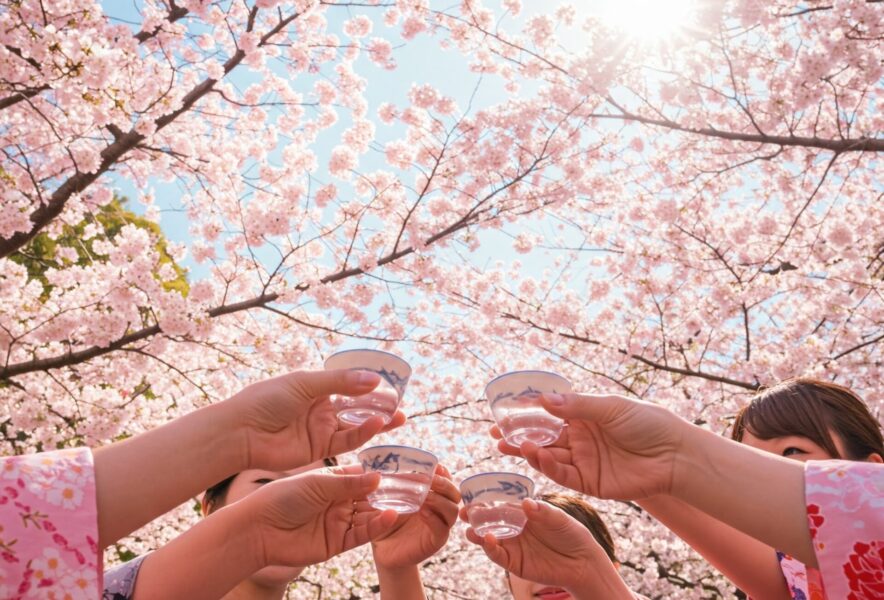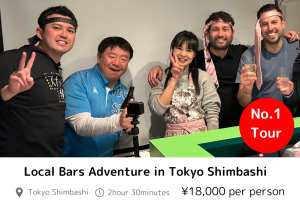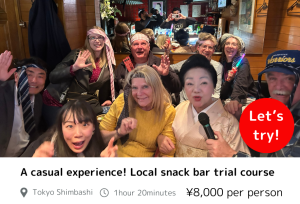Previously, we introduced rosé wine as a springtime drink, but in Japan, you’ll also find a wide variety of “Haru-zake” (Spring Sake) lining store shelves this season!
In addition to exploring the basics of sake, Japan’s “national drink,” we’ll take a look at some famous cherry blossom spots and local breweries. With a copy of the “Snack Textbook” in hand, let’s embark on a journey to discover sake, cherry blossoms, and the warm connections between people.
Contents
What is Sake?
Sake is a brewed alcoholic beverage made primarily from rice, rice koji (malted rice), and water. Its production process is almost like a delicate art form. The variety of rice used, the degree of polishing, the quality of the water, the type of yeast, and the craftsmanship of the toji (master brewer) all contribute to creating its diverse flavors.
Special varieties of rice, known as shuzo kotekimai (sake rice), are often used as ingredients. Notable examples include Yamada Nishiki and Gohyakumangoku, which are especially suited for producing sake with a clean, refined taste.
Rice koji, made by cultivating koji mold on steamed rice, plays a crucial role by converting rice starches into sugar. The brewing water, often sourced locally, is a blessing from nature that gives the sake its unique regional character. In spring, snowmelt water is sometimes used, resulting in a crisp, pure flavor. Then comes the yeast — the microorganism responsible for fermentation. Different strains can create everything from rich, elegant aromas to smooth and mellow tastes.
Types of Sake
Sake is classified into various types based on brewing methods and rice polishing ratios. Here are a couple of examples:
• Junmai Ginjo-shu: Made with rice polished to 60% or less, using only rice, koji, and water. Carefully brewed to produce a refined flavor.
• Daiginjo-shu: Made with rice polished to 50% or less and brewed with advanced techniques. Offers a clean yet slightly sweet flavor derived from the rice itself.
Beyond these “Tokutei Meisho-shu” (special designation sakes), there is a wide variety of sake with unique personalities that beautifully complement springtime meals.
Three Spots Where Cherry Blossoms and Local Sake Meet
As spring arrives, cherry blossoms bloom across Japan. Enjoying local sake while viewing these blossoms is one of the season’s greatest pleasures. Here are three places where you can experience the perfect harmony of sakura and sake.
1. Hirosaki Castle (Aomori Prefecture) & Hirosaki Breweries
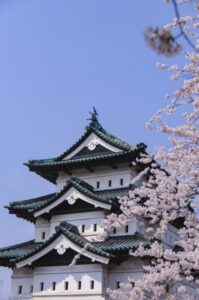
Famous for its stunning cherry blossoms, Hirosaki Castle boasts around 2,600 sakura trees. The castle town of Hirosaki is also home to several historic breweries. For example, Miura Shuzo, which makes Houhai, and Rokka Shuzo, known for Joppari and Tokirai. After enjoying the full bloom, consider stopping by a local snack bar for a nightcap!
2. Mt. Yoshino (Nara Prefecture) & Nara Breweries
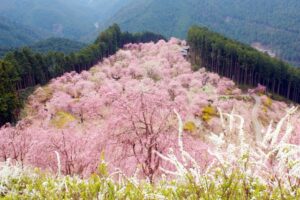
Known for cherry blossoms since ancient times, Mt. Yoshino is said to have “a thousand trees at a glance” as the entire mountain becomes draped in pink. At the base of the mountain, you’ll find many traditional breweries, such as Imanishi Seibei Shoten, which produces Harushika, and Imanishi Shuzo Co., Ltd., known for Mimuro Sugi. The region’s rich nature and history add depth to the flavor of the local sake.
3. Ueno Onshi Park (Tokyo) & Tokyo Breweries
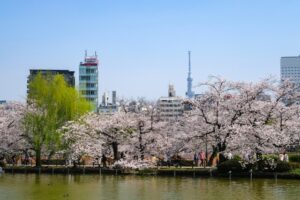
One of Tokyo’s most popular cherry blossom spots, Ueno Park draws large crowds every spring. Not far from the hustle and bustle, you’ll find historic breweries as well. For example, Ozawa Shuzo, which makes Sawanoi, brews sake in the rich natural surroundings of Okutama. Escape the busy city and visit a snack bar serving local Okutama sake — a peaceful oasis where you can enjoy carefully crafted flavors. Here, you can truly appreciate both the vibrant beauty of the cherry blossoms and the deep richness of Tokyo’s local sake.
Snack Bars: A Unique Space to Savor Sake and Local Warmth
Once you’ve admired the cherry blossoms and discovered local sake, why not step into a neighborhood snack bar? These establishments offer a cozy, community-driven atmosphere where you can chat with the mama (hostess) or regular patrons over the counter — a heartwarming memory to take home from your travels.
“The sake you’re drinking was made at the brewery near the cherry blossoms you just saw!” “This snack was handmade by the mama using local ingredients.”
Conversations like these bring the region to life through all five senses. A seat at the snack bar counter is also a treasure trove of local sake knowledge — real, lived experiences you won’t find in textbooks.
Why not discover a new side of sake and cherry blossoms through genuine human connection, something you can only truly feel in person?
Let’s go to Izakaya and a Japanese Snack-bar with a fun guide!!
You can enjoy many kinds of drinks at Izakaya and drinking culture Snack Bars, beloved by many but you can’t enter without a guide. You can enjoy communication with the owner and other customers, as well as singing karaoke, allowing for a relaxing time.
Most snack bars have a policy of refusing entry to foreigners. However, with a tour, you’ll have a guide, so you can enter with peace of mind.
When visiting Japan, don’t just check off the tourist spots –
dive into local experiences for an unforgettable journey!
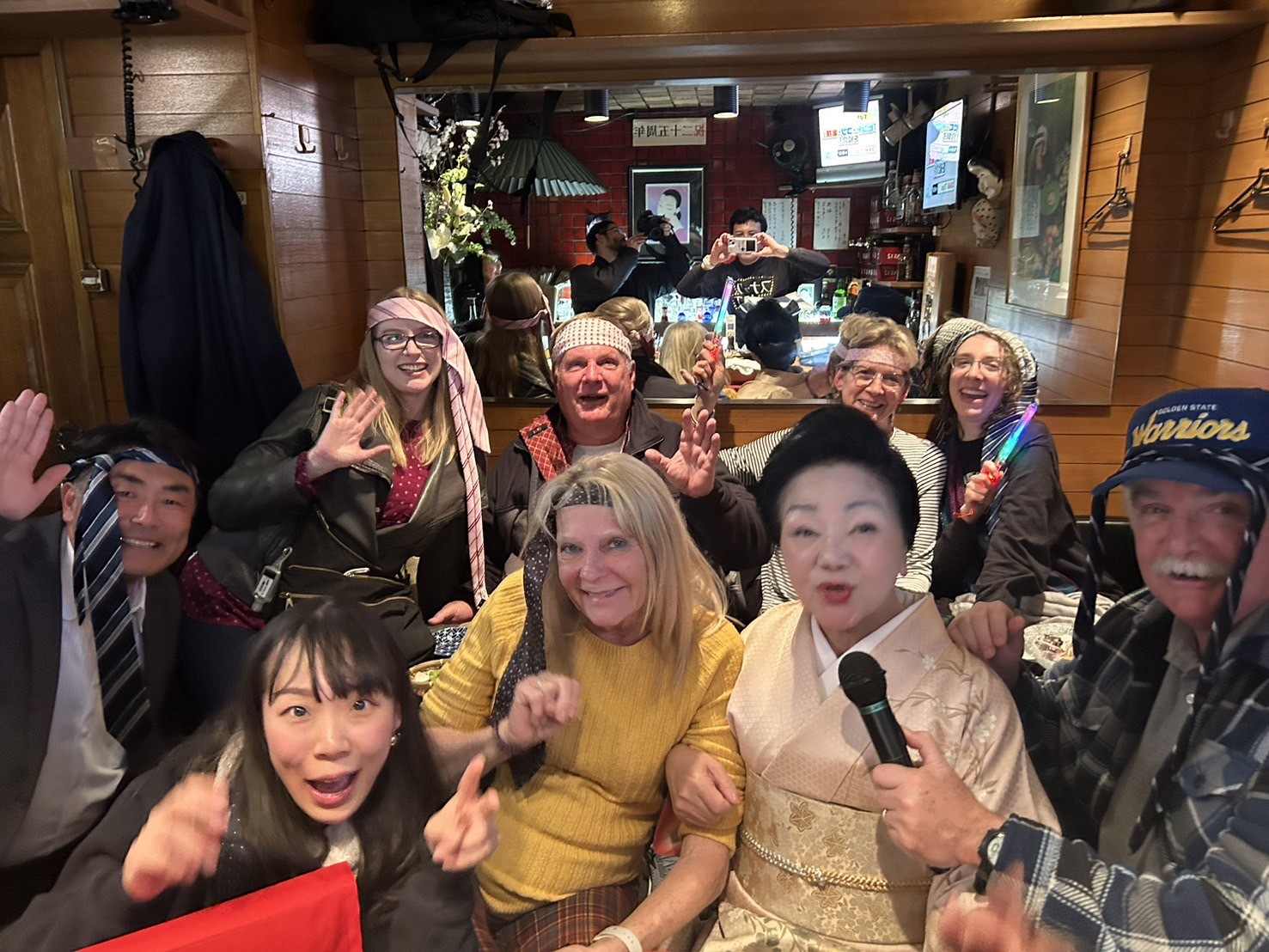
Once you experience it, you’ll be captivated too! The charm of snack bars.

New encounters with people! The camaraderie of singing at a snack bar! Conversations with the mama-san!

